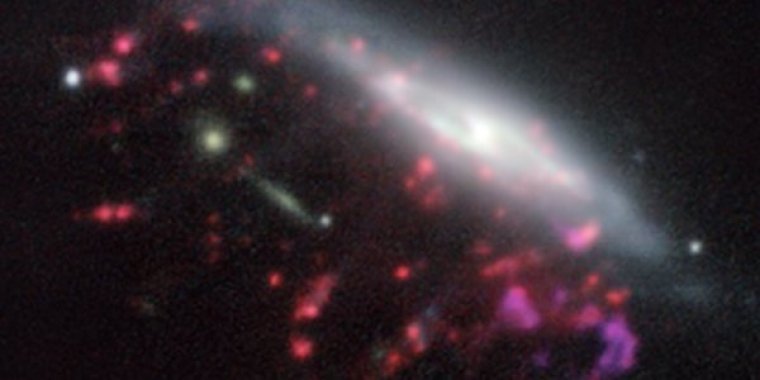| News / Science News |
Supermassive Black Holes Feed on Cosmic Jellyfish
Observations of “Jellyfish galaxies” with ESO’s Very Large Telescope have revealed a previously unknown way to fuel supermassive black holes. It seems the mechanism that produces the tentacles of gas and newborn stars that give these galaxies their nickname also makes it possible for the gas to reach the central regions of the galaxies, feeding the black hole that lurks in each of them and causing it to shine brilliantly.

Example of a jellyfish galaxy. ![]()
The tentacles of jellyfish galaxies are produced in galaxy clusters by a process called ram pressure stripping. Their mutual gravitational attraction causes galaxies to fall at high speed into galaxy clusters, where they encounter a hot, dense gas which acts like a powerful wind, forcing tails of gas out of the galaxy’s disc and triggering starbursts within it.
Six out of the seven jellyfish galaxies in the study were found to host a supermassive black hole at the centre, feeding on the surrounding gas. This fraction is unexpectedly high — among galaxies in general the fraction is less than one in ten.
This strong link between ram pressure stripping and active black holes was not predicted and has never been reported before.
A long-standing question is why only a small fraction of supermassive black holes at the centres of galaxies are active. Supermassive black holes are present in almost all galaxies, so why are only a few accreting matter and shining brightly? These results reveal a previously unknown mechanism by which the black holes can be fed. (ESO)
YOU MAY ALSO LIKE




